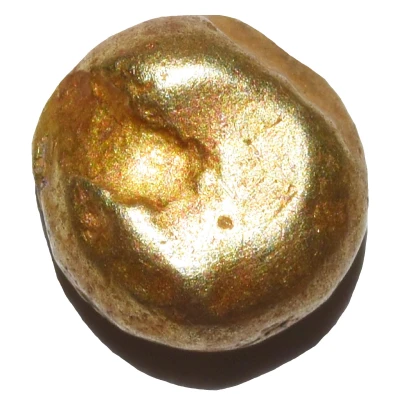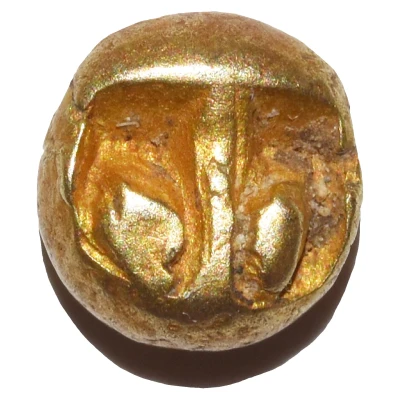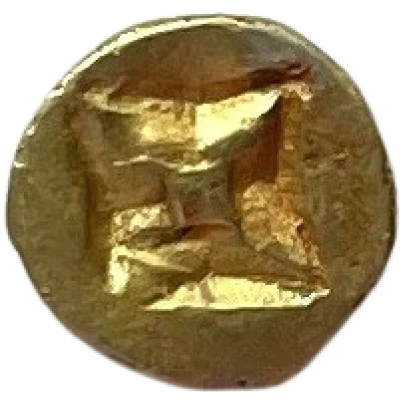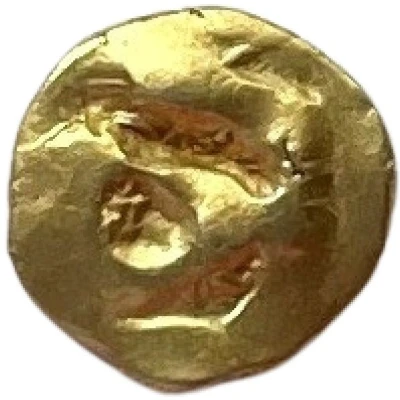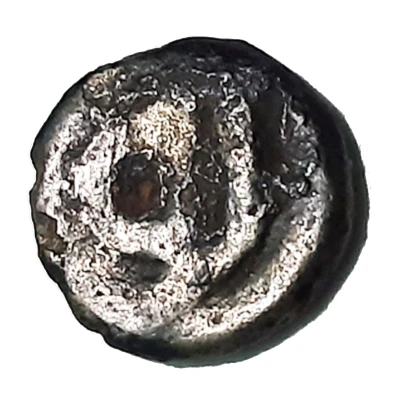
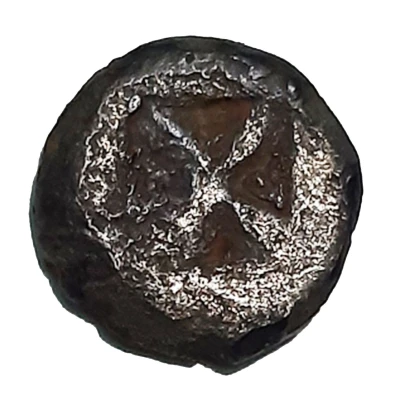

1 Masa Sumatra ND
| Silver | 1.42 g | 12 mm |
| Issuer | Pre-Islamic kingdoms (Indonesia) |
|---|---|
| Type | Standard circulation coin |
| Years | 1100-1300 |
| Value | 1 Māsa |
| Composition | Silver |
| Weight | 1.42 g |
| Diameter | 12 mm |
| Shape | Round (irregular) |
| Demonetized | Yes |
| Updated | 2024-10-05 |
| Numista | N#337267 |
|---|---|
| Rarity index | 72% |
Reverse
Incuse square and a four petaled flower design identified as the Sandalwood flower (genus Santalum).
Edge
Plain
Comment
Silver coinage used in the Malay archipelago between the ninth to thirteenth centuries. Presumably first developed in Java during the Śailendra period before spreading to various locations such as Sumatra and Malay Peninsula. Commonly referred in literature as "sandalwood flower coins" based its reverse design, or "mā coins" based on its observe design. Often inaccurately referred as Majapahit coin, even though common use of this coin predates the founding of Majapahit empire in AD 1293. By the fourteenth century, cash transactions in Majapahit had actually transitioned to Chinese cash coins (Wicks 1986: 44-47, 50-55)Sumatran samples are usually found in gold or electrum. The sandalwood flower is smaller and more finely executed compared to Javanese coins. These coins was part of a system used in classical Java and Bali with ideal weight and unit reconstructed as follow (Wicks 1986: 45, 59) (Christie 1996: 257-260):
1 kaṭi (608.96 g) = 16 suvarṇa / tahil
1 suvarṇa / tahil (38.06 g) = 16 māṣa
1 māṣa (2.412 g) = 4 kupang
1 kupang (0.603 g)
In Old Javanese inscriptions, these units are invariably abbreviated as ka, su/ta, mā, and ku. The latest inscription that referred to these units is from AD 1296 AD.
See:
Christie, Jan Wisseman (1996) "Money and Its Uses in the Javanese States of the Ninth to Fifteenth Centuries A.D."
Millies, Henricus Christiaan (1871). Recherches sur les monnaies des indigènes de l'archipel Indien et de la pèninsule Malaie https://archive.org/details/recherchessurles00mill_0 plate XV
Wicks, R. S. (1986). "Monetary Developments in Java between the Ninth and Sixteenth Centuries: A Numismatic Perspective" https://doi.org/10.2307/3351187, pp: 51.
Interesting fact
One interesting fact about the Standard circulation coin 1 Masa (Sumatra) ND (1100-1300) from Pre-Islamic kingdoms (Indonesia) made of Silver weighing 1.42 g is that it features a unique blend of Hindu-Buddhist and Islamic influences in its design. The coin's obverse side bears an image of a Hindu deity, while the reverse side features an Islamic inscription in Arabic script, reflecting the cultural and religious diversity of the region during that time period.
Price
| Date | Mintage | VG | F | VF | XF | AU | UNC |
|---|---|---|---|---|---|---|---|
| ND (1100-1300) | - | - | - | - | - | - |
Values in the table are based on evaluations by sales realized on Internet platforms. They serve as an indication only for 1 Masa (Sumatra) ND (1100-1300) coin.
